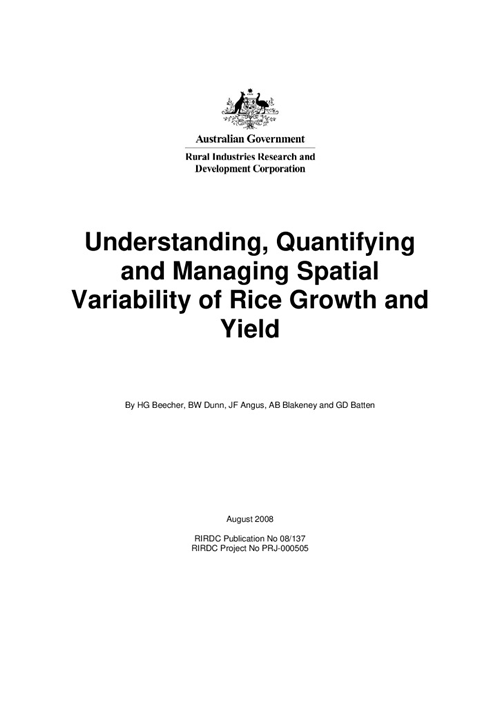Rice Breeding Australia Annual Results: September 2023 to August 2024
As part of this project, Rice Breeding Australia Ltd. (RBA) has rapidly evolved the previous rice breeding program despite significant challenges in its first year...
 RICE
RICE 
75 pages
Published: 25 Aug 2008
Author(s): H G Beecher et al\n\nHG Beecher, Dunn, BW, Angus, JF, Blakeney, AB, Batten, GD
Download report PDF
DownloadPurchase a hard copy - AUD $45.00
Spatial variability of rice growth and yield within rice fields is a major factor limiting rice yields. Our hypothesis was that average field rice yields could be increased by understanding and managing the factors that contribute to the spatial variability of yield within fields.
Rice yields are directly related to nitrogen fertiliser inputs. Fertiliser prices have risen dramatically in the last few years so more judicial use is required to keep costs minimal.
Irrigated crops are typically grown on soils that have been laser levelled, so fields have both cut and fill areas. Removing the topsoil before landforming and returning it afterwards (“topsoiling”) helps to alleviate cut and fill soil and subsequently yield differences.
Identification of poor yielding areas within fields and strategic fertiliser applications can help increase overall yields with monetary savings compared to blanket applications. New technology has helped to better manage fertiliser applications to those areas that need it most. NIR technology allows the nitrogen uptake of rice plants to be measured. Whilst maNage rice is a computer model widely used by ricegrowers to calculate their fertiliser requirements.